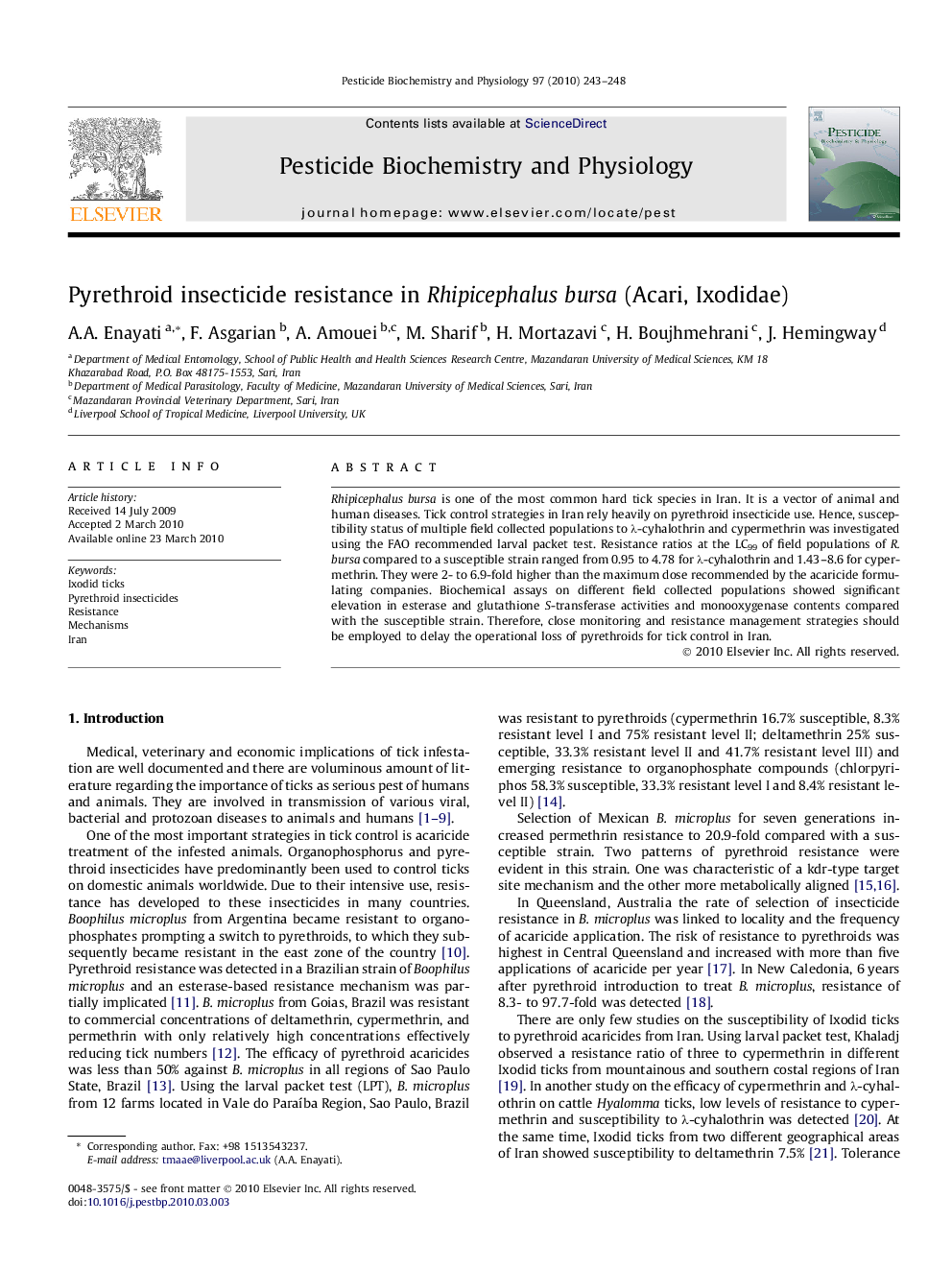| Article ID | Journal | Published Year | Pages | File Type |
|---|---|---|---|---|
| 2009635 | Pesticide Biochemistry and Physiology | 2010 | 6 Pages |
Rhipicephalus bursa is one of the most common hard tick species in Iran. It is a vector of animal and human diseases. Tick control strategies in Iran rely heavily on pyrethroid insecticide use. Hence, susceptibility status of multiple field collected populations to λ-cyhalothrin and cypermethrin was investigated using the FAO recommended larval packet test. Resistance ratios at the LC99 of field populations of R. bursa compared to a susceptible strain ranged from 0.95 to 4.78 for λ-cyhalothrin and 1.43–8.6 for cypermethrin. They were 2- to 6.9-fold higher than the maximum dose recommended by the acaricide formulating companies. Biochemical assays on different field collected populations showed significant elevation in esterase and glutathione S-transferase activities and monooxygenase contents compared with the susceptible strain. Therefore, close monitoring and resistance management strategies should be employed to delay the operational loss of pyrethroids for tick control in Iran.
